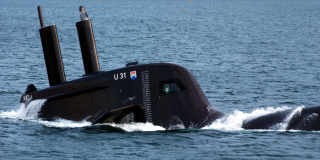Explained: History's Five Most Lethal Warship Classes (1900-1950)
From German subs to American aircraft carriers, these are some of the most formidable classes of ships to set sail in the first half of the twentieth century.
After the end of World War II, the Towns continued to serve. Several contributed fire support in Korea and elsewhere, including Suez and Malaya. One ship, HMS Belfast, survives as a war memorial on the Thames.
Conclusion
States have changed the way in which they approach the ship “class.” The ten Nimitz class aircraft carriers were built over a period of forty years, with the newest ships incorporating innovations that were unimaginable in older vessels. The Flight III Arleigh Burke destroyers will share a name and a hull with their older sisters, but not much else. The slower pace of ship construction, combined with the faster pace of technological innovation, may eventually render the “class” concept entirely obsolete. Nevertheless, it will remain an important historical marking for organizing warships.
Robert Farley is an assistant professor at the Patterson School of Diplomacy and International Commerce. His work includes military doctrine, national security, and maritime affairs.He blogs at Lawyers, Guns and Money and Information Dissemination and The Diplomat. Follow him on Twitter:@drfarls.
Image: Reuters.

